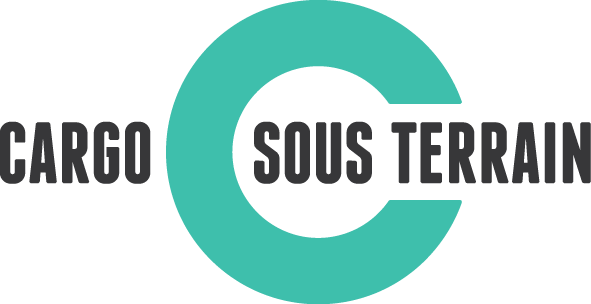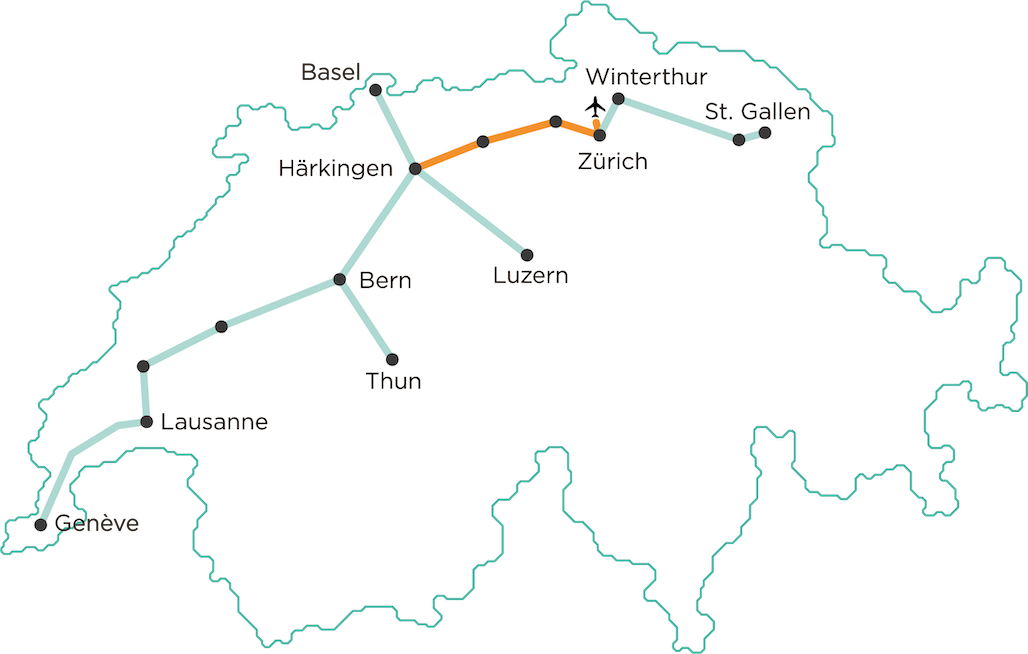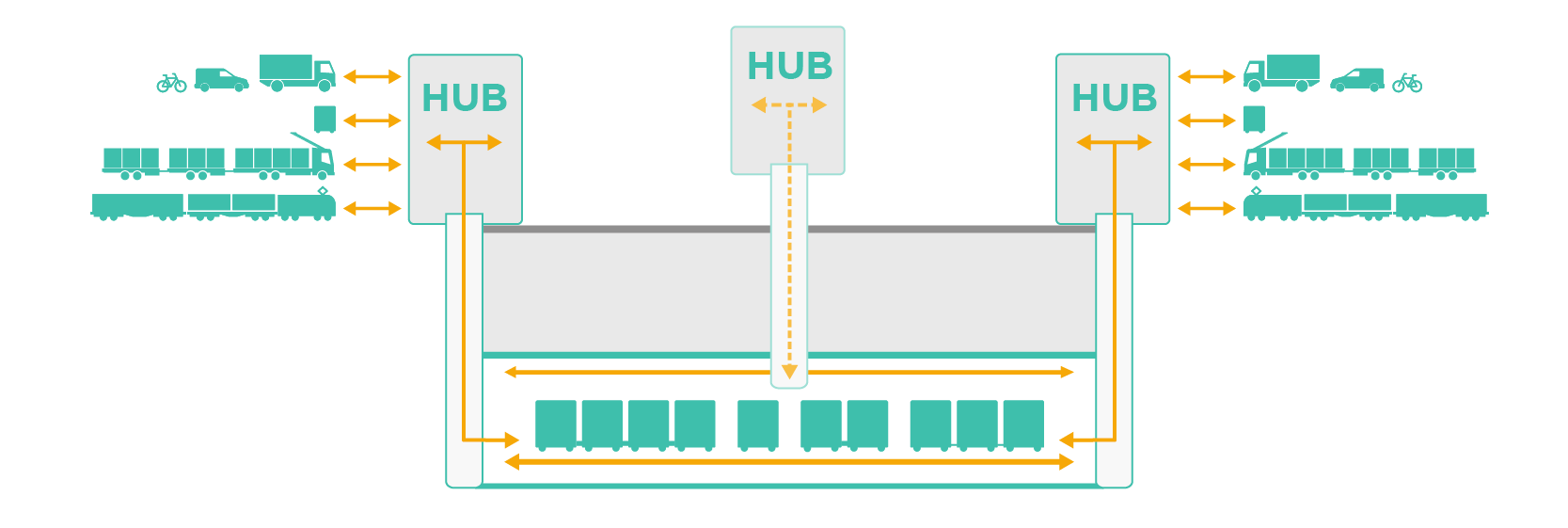Sustainable freight transport
A new transport route eases pressure on roads and railways to ensure reliable supply throughout Switzerland.
The planned tunnel network connects urban centers and logistics sites with hubs for a continuous flow of goods. Privately funded and digitally controlled, it allows flexible use for all customer segments.
WHY CST?

Economy
Cargo sous terrain is an innovative and market-oriented logistics system. Planning and development is being carried out in close collaboration with the future users, in other words with manufacturers, wholesalers/retailers and logistics service providers.
Major industry representatives are shareholders in the company and are making active contributions to the solution concept.
For customers, Cargo sous terrain offers the option of utilising individual services or a comprehensive total package from the loading ramp through to the final destination. This also includes bundled surface logistics. The resultant infrastructure is accessible for all market operators.
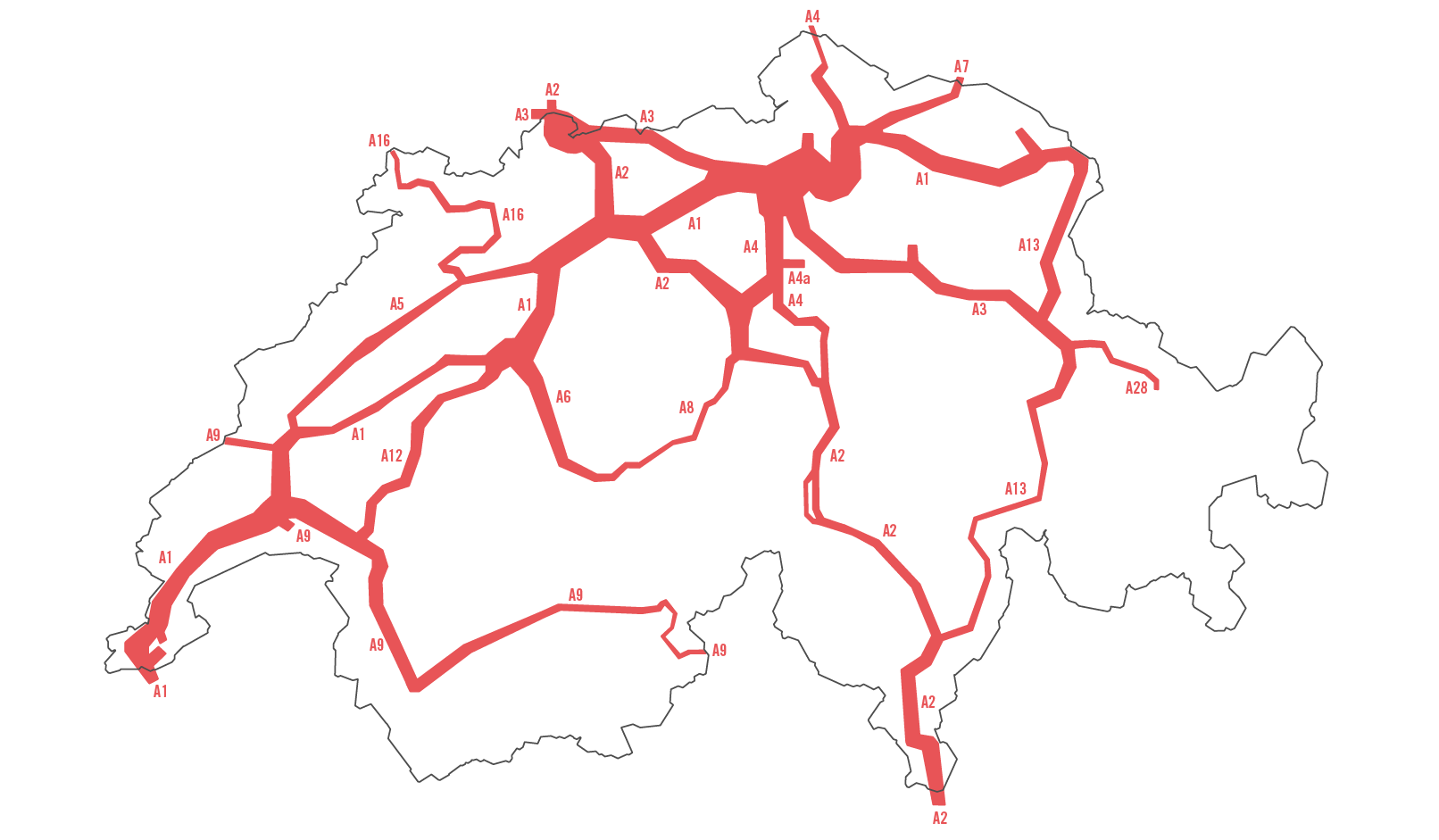
Traffic
Estimates from the Bundesamt für Strassen (FEDRO; Swiss Federal Roads Office, Traffic Census 2013) and from the Bundesamt für Raumentwicklung (ARE; Federal Office for Spatial Development: Swiss Traffic Perspectives 2050) anticipate that the volume of goods transport in Switzerland will increase by up to 31% until 2050. The current traffic routes alone are not capable of handling this growth.
Unlimited expansion of the transport infrastructures is not possible. For this reason, new routes for supplying the urban centres are being sought. Cargo sous terrain is an innovative solution with an infrastructure intended solely for goods transport. It relieves the load on rail and road at critical points.
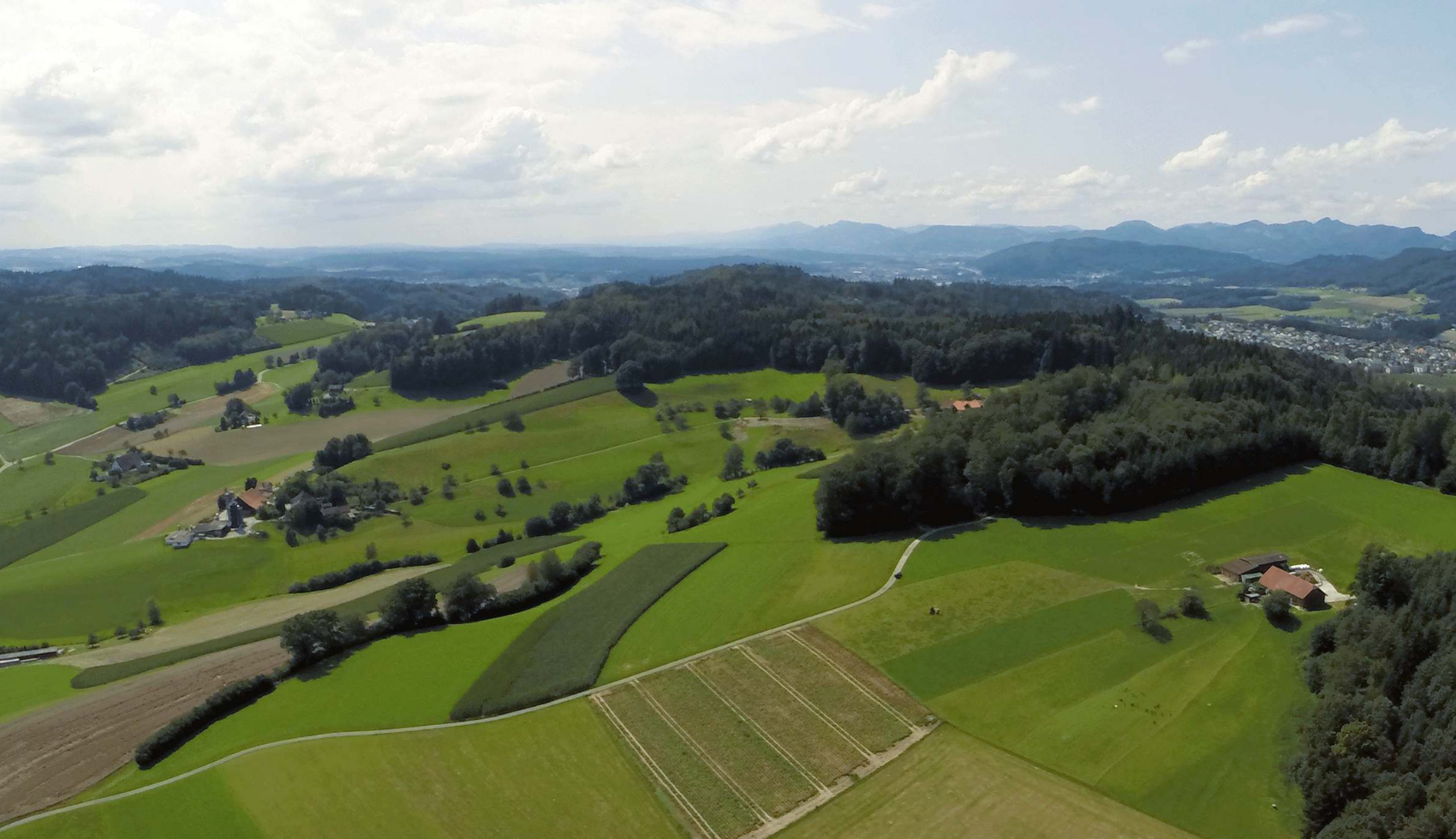
Environment
Cargo sous terrain is an important element of sustainable and environmentally-friendly goods transport in Switzerland. A reduction in heavy goods traffic on national roads and efficient micro-distribution within urban areas will result in considerable savings in CO2 emissions and a reduction in noise levels. The system will be 100% operated using power from renewable energy sources.
As part of a Life Cycle Assessment (LCA), Cargo sous terrain has commissioned a comprehensive overall evaluation of the environmental impact of the project. The effects in terms of air quality, noise emissions, space utilisation as well as the health costs were investigated. The LCA finds that CST has a significantly lower environmental and climate impact than road transport, even in a future new heavy-goods vehicle propulsion technologies.
NETWORK
The first section of the Cargo sous terrain network will run from Härkingen-Niederbipp to Zurich and is around 70 kilometres long. On this section, there are several connection points (hubs). Expansion towards other key logistics and distribution centres within Switzerland will continue progressively. Until the middle of this century, a total network of 500 kilometres length is being created between Lake Constance and Lake Geneva, with branches to Basel, Lucerne and Thun.
LOCATIONS
Access to the Cargo sous terrain system is provided via the hubs, which permit the fully automated loading and unloading of the vehicles. Vertical lifts are used to feed the goods into the transportation system. The hubs are being created in existing logistics centres and ensure interconnection with all traffic systems (rail, road, water, air freight). CST is accessible to all market operators on an equal footing.
TECHNOLOGY
Cargo sous terrain follows a similar principle to that of an automatic conveyor system. Automated, driverless transport vehicles which are able to pick up and deposit loads automatically from the designated ramps and lifts travel around the clock in the tunnels.
The vehicles operate in three-track tunnels with a constant speed. The goods are transported on pallets or in modified containers. Thanks to refrigeration-compatible transport vehicles, the transport of fresh and chilled goods is also possible.
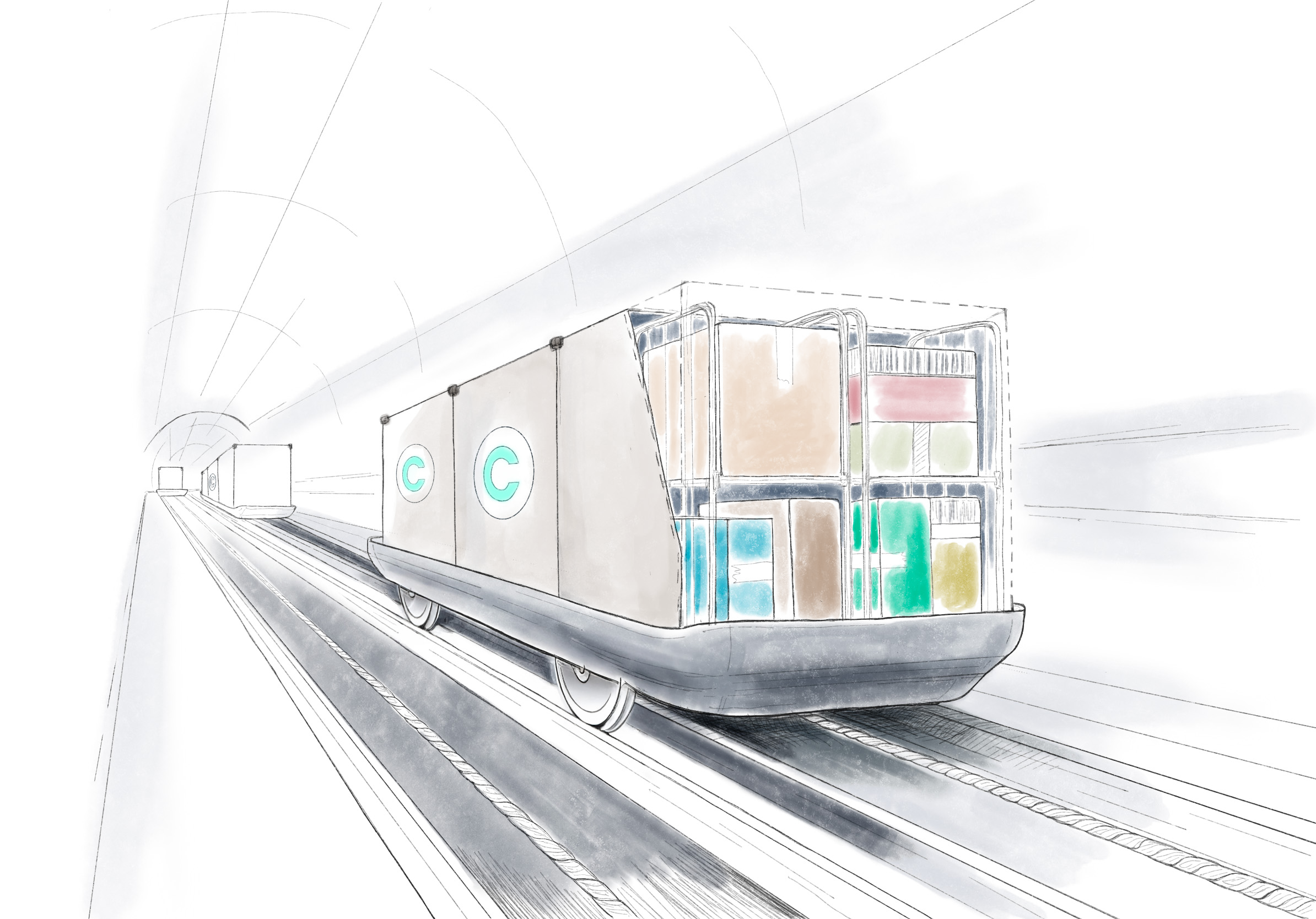
SURFACE LOGISTICS
Traffic problems are accentuated in cities. Goods transports make up a large part of the volume of traffic in metropolitan areas. Cargo sous terrain is setting up a city logistics system with environmentally-friendly vehicles for the efficient micro-distribution of transported goods in the smart cities of the future.
In the Cargo sous terrain system, the goods are already bundled in the tunnel. This means that the subsequent micro-distribution is prepared in advance. Deliveries to sales outlets and end consumers from the hub are fully coordinated, rather than each supplier delivering their goods individually.
The process
As planning progresses, the cantons will include the exact locations and routes of the hubs and tunnels in their structure plans. This will be done in close coordination between the municipalities, cantons and CST with the involvement of both population and authorities.
Cargo sous terrain is a private sector initiative. No subsidies are needed to build the infrastructure and operate the tunnel. The basis for the realisation of this largely underground freight transport facility across cantonal borders is the Federal Law on Underground Freight Transport that was approved by the National Council and the Council of States in December 2021. Based upon this law, the federal government can draw up a sectoral plan that defines the overarching framework conditions.
Construction permit and planning
For the financing of the next phase and with the construction permit in place for the first section, CST will achieve the investment of funds from domestic and overseas sources. The capital commitments were triggered by the parliamentary approval of the Underground Freight Transport Act 2021. The proportion of Swiss investors in the consortium amounts to over 50%.
The largest Swiss shareholder is Mobiliar, other principal investors from Switzerland include Coop, Migros, Die Schweizerische Post, Swisscom, Zürcher Kantonalbank, Credit Suisse (part of UBS Group), K+D Valueinvest and Helvetia Versicherungen. The shareholders include international investors such as the European infrastructure development firm Meridiam who brings its experience and expertise to the future project.
Memberships
Cargo sous terrain is a member of the following organisations and associations:
- asut – Schweizerischer Verband der Telekommunikation
- Fachgruppe für Untertagbau (FGU)
- Gewerbe Olten/Solothurnischer Gewerbeverband
- GS1
- Industrie- und Handelsverein Olten
- Made in Zürich Initiative
- Nachhaltigkeitsnetzwerk Kanton Solothurn (NNWSO)
- Schweizerische Mobilitätsplattform (its-ch)
- Solothurner Handelskammer (SOHK)
- Spedlogswiss
- SVGW – Fachverband für Wasser, Gas und Wärme
- Swiss Shippers’ Council
- Swisscleantech
- VAP – Verband der verladenden Wirtschaft
- VöV – Verband öffentlicher Verkehr
- Verein Netzwerk Logistik (VNL)
History of CST
From outline technical concept to Cargo sous terrain AG
RECORD
of infrastructure projects in Switzerland
